#st joan of arc chapel
Explore tagged Tumblr posts
Text

Lenten cross at Marquette University's St. Joan of Arc Chapel
6 notes
·
View notes
Text
Catholic Bat Family 2 (Inspired by @incomingalbatross)
Alright, we're back on this thing again. So, as stated before, this is inspired by @incomingalbatross's posts and asks about the Bat Family being Catholic and I really liked, so I'll write about my ideas on it. If you wanna see her posts, go check out her blog. Also, if you wanna see the Bat Family Confirmation saints, click here.
So, with that out of the way, let's get creative! (Before we do, though, I would like to establish that Bruce is a good dad in this because that's how it should be).
So far, we've established:
Bruce's origins and current faith (Very Strong).
Alfred is Anglican
Father Brown is in this universe (and so is Flambeau).
Selina started antagonistic towards it, but thanks to a nudge from Bruce and her sister Maggie, she develops her faith on her own.
Dick is "umbrella" at first and not very formal, but joins the Church after Final Crisis (a lot of angst in this)
Jason was fiercely Catholic and wanted to become a priest before dying. When he returns, he's angry a both Bruce and the Church, but slowly he starts reconciling with both (beginning with Jason cleansing at Lourdes). He still wants to become a priest (maybe).
Tim is Protestant, likes debating, is church friends with Clark, and probably converts Kon. Also, the TOUGHEST NUT TO CRACK IN THIS WHOLE THING!
The family splinters after Final Crisis, leaving many dysfunctions unresolved.
Dick and Damian come into the faith while Bruce is "dead", and Jason returns to it, becoming the spiritual leader of the family (kind of).
When Bruce comes back, he and Jason finish mending their relationship and talk about Jason wanting to be a priest.
That leaves us with a couple of things/people to set up: Cass, Steph, Duke, the Rows, what happens to Bruce in the time stream, how Tim comes into all of this (if at all), and more.
First things first, let's talk about the other people.
Cass I feel like she would want to follow into the faith not only because Bruce is Catholic and he's the first person (besides Barbara) that ever treated her well. But because how her code follows very closely with the idea of forgiveness, redemption, and fierce defense that Catholic Christianity is known for (much like Bruce). And personally, her Confirmation saint has to be St. Joan of Arc.
She definitely found a denomination in Hong Kong or Macau, though
Steph is more tricky. From what I remember of her, she is friendly, fierce, calls people out on their bull, has a terrible home life (dad is abusive and a villain, mom is an addict), and clashes with Bruce a lot. She has a strong bond with Cass, Tim, and Barbara, which makes me think that she maybe leans more towards Protestantism but is not devout at all. She still respects the faith of Cass and the others, tho.
However, once she starts going to college, she walks by the campus church and something just... I don't know, starts calling to her. Maybe it's all of the lessons Bruce and Jason gave, maybe it's a reminder of the quiet chapel at the Manor, maybe it's all the times she listened to Damian talk about his lessons, but regardless of what it is, she begins hanging out at the church and talks with the campus priest. Eventually, she comes to Bruce and asks her to be her Godfather and Sponsor.
Duke...I honestly don't know. He seems to be a passionate kid that was raised by parents with good morals, so I wanna say he's Episcopalian, but I don't know. Anyone is welcome to suggest or add to him.
Harper and Cullen would be very angry at the world and would be very shocked a finding out Batman is Catholic. That turns their whole world on its head, and while they eventually come around to it, I don't think they would ever join the Church.
And finally (for today), Tim. He, as stated before, is the toughest nut to crack in this universe. That's because he's just so naturally skeptical of everything, likes to find answers from scratch, and just doesn't have a need to go looking for it. The only thing that I can come up with is looking into the Dominican Order, who's whole thing revolves around education and academia. And since Tim is the most affected by Bruce's "death", that might cause a giant rift in him. He goes to Ra's for help, suffers from a giant crisis of faith, and eventually stumbles upon a Dominican monastery. There, he begins researching and politely debating with the friars, eventually discussing these adventures with a playful but very intelligent priest in England.
This is getting pretty long, so I'm gonna stop here for today. Everyone is welcome to look into the other topics of discussion, share ideas, recommend new ones, and even make a post of their own (just remember to add proper credit. Even though this is not a school assignment, what starts here ends there). Just please remember to keep it civil. Don't forget, this was inspired by @incomingalbatross. Go follow her, she is awesome and posts about things beyond Batman (Doctor Who, Psych, Father Brown, Ranger's Apprentice, etc.).
Anyways, have a good one!!
#batman#dc comics#batfamily#bruce wayne#catholic#jason todd#batfam#christianity#damian wayne#dick grayson#cassandra cain#duke thomas#stephanie brown#harper row#cullen row#batdad#bruce is a good dad#father brown#hercule flambeau#tim drake#selina kyle#batcat#bruce x selina#headcanon
24 notes
·
View notes
Text
Genuinely don’t know if this is the *oldest* thing I’ve touched but the St. Joan of Arc Chapel walls are almost 800 years old so I guess that works?
(Not counting naturally occurring things like people and rocks and plants)
Consider things like coins, books, or family heirlooms! Tell me about it in the tags!
11K notes
·
View notes
Text
Chapel Dedicated to St. Joan of Arc
Quick! Name the oldest structures not built by Native Americans in Wisconsin. Probably some pioneer's cabin or a lead miner's badger hole or the state's first capitol building in Belmont come to mind. But you're wrong. The oldest non-Native American structure is a stone chapel located in Milwaukee on the Marquette University campus. It was built in the early 1400s, if not before.
Though hundreds of years old, the chapel did not originate in Wisconsin. It was built in France in the little village of Chasse, where it was known as Chapelle de St. Martin de Seyssuel. Like many medieval structures, it was not constructed all at once but built in stages over a period of times, and the changing architectural styles can still be seen today.
Beloved by nobles and villagers alike, the chapel stood in the village for centuries. Following the First World War, Jacques Couëlle, a young architect from Aix-en-Provence, passed through Chasse, where he became enthralled by the chapel. Meticulously, he photographed, rendered architectural drawings, and measured and numbered each individual stone. In 1926, Gertrude Hill Gavin, the daughter of the famous railroad magnate James J. Hill, decided to purchase the chapel. It was dismantled stone by stone and, with Couëlle's assistance, transported to Gavin's fifty-acre estate in Jericho, on Long Island in New York.
Stone by stone, the chapel was reconstructed in Jericho. John Russell Pope, a leading architect who designed the National Gallery of Art in Washington, D.C., and the Frick Mansion (later, Museum) in New York, developed the plan. This beautiful chapel was grafted onto a massive Franch château, which Gavin had also brough to the United States, stone by stone, from France. With enough money, anything can be accomplished.
In 1962, the Gavin estate passed into the hands of Mr. and Mrs. Marc B Rojtman. Just as they were about to move into the estate, a mysterious fire broke out. The fire gutted most of the château but miraculously spared the chapel. Two years later, the Rojtmans presented the chapel to Marquette, along with numerous authentic furnishings. The chapel was again disassembled, then loaded onto trucks, each carrying a forty-thousand-pound-load, and driven to Milwaukee. Reconstruction was completely by July 1965.
Weirder even than its amazing journey from France to Milwaukee (with a stopover on Long Island) is the Joan of Arc Stone instead the chapel. Numerous legends are associated with this stone. They recount how Joan of Arc (1412-1431) prayed before a statue of the Virgin Mary, which stood on this very stone. At the end of her prayer, she delicately kissed the stone. Ever since Joan's kiss, the stone has been colder than any other stone surrounding it.
Today, you can see the ornate medieval furnishings and fixtures in the chapel for yourself. A helpful smiling undergrad studying in the back will gladly instruct you in the legend of the Chapel of St. Joan of Arc. Go ahead-you can even touch the very stone where St. Joan pressed her lips.
It's up to you what those resulting goose bumps mean.
0 notes
Text
Château Royal de Blois
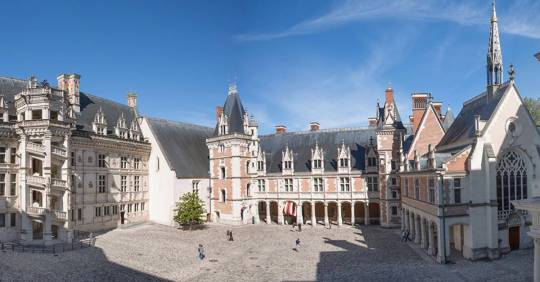
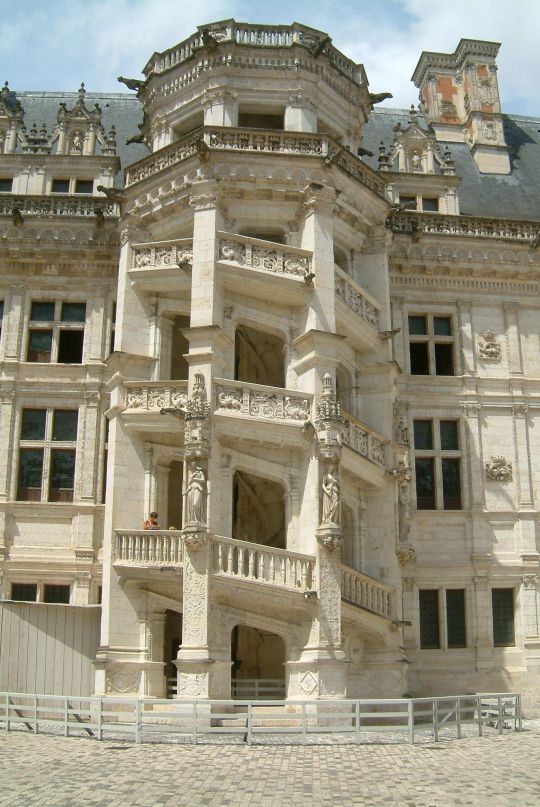
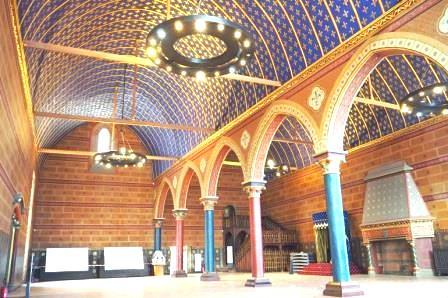
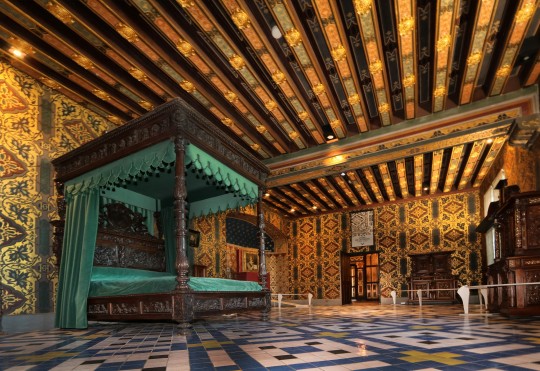
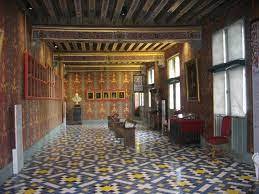
Château Royal de Blois is located in the city of Blois, France. The castle has four wings from the 13th through the 17thcenturies, giving it many design styles. In the 9th century, a medieval fortress and a county palace sat on the site. The castle has a 13th century medieval fortress, a Louis XII Gothic wing added in 1498, an Italian Renaissance wing added in 1515 by Francois I, and the Classical Gaston of Orleans wing erected in 1634 by the brother of Louis XIII and heir to the throne. The Gaston of Orleans wing was never fully completed. Due to the different construction periods and design, the castle interior has columns, pilasters, capitals, buttresses, candelabra-laced décor, stonework, open galleries, a grand spiral staircase, and a great polygonal staircase turret is open to the central courtyard. The Chapel of St Calais was consecrated in 1508. The royal castle was used by seven kings and ten queens of France during the Renaissance, while more than ten counts of Blois and three Dukes of Orleans resided in the royal chateau. The castle has an extensive history. Joan of Arc was blessed at the chateau in 1429 before setting off to defeat the English in New Orleans. The castle fell into disrepair in the 17th century and suffered further degradation. It was used as barracks in 1788. Château Royal de Blois was saved from a demolition order when it was classified as a historical monument in 1845, and restoration work began. Château Royal de Blois is open to the public.
#château royal de blois#chateaux#CASTLES#Loire Valley#France#loir et cher#blois#museum#sound and light show
22 notes
·
View notes
Text

Idk where this come from, but it was so funny to draw at midnight 🤣
The photo was taken by me, it's the St Joan of Arc's chapel inside the Cathedral of Orléans
I like to think that Gilles would worship every statue of "Joan" he would see 🤣 and Jean being annoyed by his boyfriend
I will definitely draw more of this because I really loved doing this 🤣
Don't repost, only reblog
#ikemen vampire#cybird#ikemen series#cybird ikemen#ikevam#otome game#otome#ikevamp#ikemen#cybird otome#ikevam jeanne#ikevam jean#ikevamp jean#ikemen vampire jean#ikemen jean#ikevam gilles#ikemen gilles#ikevamp gilles#gilles de rais#joan of arc#jeanne d'arc#ikevamp jeanne
100 notes
·
View notes
Text

St. Joan of Arc Chapel, Marquette University, Wisconsin. Laura B, March 2017.
A 15th century medieval chapel from France, rebuilt on Long Island in the 1920s, moved to Milwaukee in the 1960s.
17 notes
·
View notes
Text
Today in Christian History

Today is Saturday, May 30th, the 151st day of 2019. There are 215 days left in the year.
Today’s Highlight in History:
727: Death of Hubert, the “Apostle to the Ardennes” (a region now comprised of Northern France, Belgium, and Luxembourg).
1232: Pope Gregory IX canonizes Anthony of Padua, the “Wonder Worker.”
1416: Jerome of Prague is burned for heresy by the Council of Constance. He had been a follower of reformer Jan Hus.
1431: Joan of Arc walks to the market square in Rouen, Normandy, where she is to be burned, kneels and prays for her enemies, then mounts the pyre of wood. As the flames leap up, she asks for a cross to be held before her. Her final word is “Jesus.”
1525: Last preserved letter of Conrad Grebel, written from Zurich, to his brother-in-law Vadian, is a vigorous plea against attempts to suppress Anabaptists by fines, confiscation of property, imprisonment, or death.
1527: Philip of Hesse opens the University of Marburg.
1574: Death of King Charles IX of France, haunted by superstitious terrors because of the Huguenots he had ordered to be massacred in the infamous St. Bartholomew’s Day Massacre.
1639: Death of Metrophanes Kritopoulos, Orthodox patriarch of Alexandria, Egypt. His discussions with Protestants prompted him to write an exposition of Eastern Orthodox doctrine, based on the early church fathers, in an attempt to achieve Christian unity.
1756: Death at Bulstrode of Elizabeth Elstob, who had broken sex barriers to learn Anglo-Saxon. Among her translations was An English-Saxon Homily on the Birthday of St. Gregory, anciently used in the English-Saxon church, giving an account of the conversion of the English from paganism to Christianity. She had been a fervent defender of the Church of England.
1792: William Carey preaches a famous sermon on Isaiah 54:2-3, before the Baptist Association meeting in Nottingham, England, at the Friar Lane Baptist Chapel, urging his listeners to "expect great things, attempt great things."
1819: At the request of his father-in-law, Anglican bishop Reginald Heber pens the words to his missionary hymn, “From Greenland’s Icy Mountains.”
1822: A slave betrays plans for a massive uprising planned by African Methodist preacher Denmark Vesey in Charleston, South Carolina. One hundred and thirty one African Americans are arrested and Vesey’s church is closed. Some of the plotters will be executed and others deported.
1858: Ordination in Maryland of Charles Grafton as a priest in the Episcopal Church. He will found the Sisters of the Holy Nativity and later, as a bishop, will stir controversy because of his fondness for ritual and vestments.
1868: In a letter, Father Weld accepts Gerard Manley Hopkins into the Jesuits. Hopkins will work as a priest among the poor, writing, but not publishing, the poems for which he is famous today, which the world will first see after his death.
1892: Death in Lucknow, India, of Ram Chandra Bose. An ardent Christian evangelist and educator, he had written apologetics, served as a member of India’s Congress, and been a delegate to international religious conferences.
1933: Death in Boga, Congo, of African evangelist Apolo Kivebulaya.
1972: Death in prison of Watchman Nee, famed Chinese evangelist.
3 notes
·
View notes
Photo

St. Joan of Arc Chapel which dates from the 15th century nestled in the heart of Marquette University. #watercolor #marquetteuniversity #mke https://www.instagram.com/p/B9SnYZ8g7BT/?igshid=uu9zicpolp0l
1 note
·
View note
Photo

Joan of Arc chapel at Marquette. . #joanofarc #joanofarcchapel #marquetteuniversity #pppMoot2022 #luthien #melian #architecture (at St. Joan of Arc Chapel, Marquette University) https://www.instagram.com/p/CkCVdWKjEbg/?igshid=NGJjMDIxMWI=
0 notes
Text

St. Joan of Arc Chapel at Marquette University
2 notes
·
View notes
Text
Journal Post Week 6
When analyzing the architecture around Milwaukee, I have noticed the implementation of historical architectural styles. The first observation I made was that pillars can be seen in many of the city's structures. While walking to class, I became aware of a highly decorated building that showed Corinthian style pillars. Stylistic pillars originated from ancient Egypt and took on several forms throughout history. They prove to have a rich architectural history and remain admired in modern day. I then noticed that the building was further decorated with an ornate frieze that reminded me of Greek sculpture from mid to 5th century BCE. The Greeks often created complex sculptures upon their buildings that told stories or commemorated Gods. The sculpted foliage upon the building is a trademark of this ancient Greek practice. The evolution of these ancient pillars can be seen in my next observation of a parking structure in the third ward. Here we see quite simple and industrial pillars holding up a roof in an alleyway. These pillars resemble the final Tuscan stage of the pillar, where it is sleek and lacks decoration. Upon further research of architecture in Milwaukee I discovered the St. Joan of Arc Chapel near Marquette. This chapel servs as a historical landmark known for its early Gothic architecture. The building contains Gothic elements such as highly decorated pointed arches, and large stained-glass windows. We can also see a small amount of ribbed vaulting that occurs in the apse of the church, allowing the structure to support more weight. This structure made me think of a notable Milwaukee landmark, the North Point Tower. When researching the structure, I discovered that it was originally a water pump for the city that was built in 1873. The tower is built in Victorian Gothic style and shows pointed arches, as well as a heavily decorated cone roof. Victorian Gothic architecture originated from Gothic architecture of 1100-1450 AD. Key elements of Victorian Gothic style include decorative masonry, stone quoins, and pressed brick.





https://www.google.com/url?sa=i&url=https%3A%2F%2Fwww.loc.gov%2Fresource%2Fhighsm.40292%2F&psig=AOvVaw3qwLp4gaOSlcLtoEuAPwOu&ust=1646245351504000&source=images&cd=vfe&ved=0CAsQjRxqFwoTCOjF_f3DpfYCFQAAAAAdAAAAABAW


0 notes
Text
Milwaukee Marvels
The wonderful city of Milwaukee has much beauty and engaging history behind its iconic architecture. From Frank Lloyd Wright’s prairie style homes to St. Joan of Arc Chapel, the oldest building in Milwaukee- the work in this great area is as stunning as the tales of old.
The Burnham Block in Milwaukee features six homes designed by Frank Lloyd Wright. These homes were part of a specific concept and vision.
��He was trying to demonstrate that the common man could live inside a piece of art,” explains Nicholas Hayes, author of “Frank Lloyd Wright’s Forgotten House: How an Omission Transformed the Architect’s Legacy.”
Nestled in the heart of the Marquette University campus, the St. Joan of Arc Chapel is the oldest building in Milwaukee, though it wasn’t originally built there.
“It’s another great preservation story — it’s not very often that a building gets moved from France,” states Julia Griffith, program director of Historic Milwaukee Inc.
FOR MORE ON THESE STORIES AND AMAZING ARCHITECTURE GO TO:
https://www.mkelifestyle.com/artsandculture/milwaukee-marvels/article_444ca138-9003-11ec-886f-6313198f0047.html
#milwaukee#wisconsin#mke#creamcity#history#architecture#iconic#monuments#landmark#churches#beautiful#frank lloyd wright#cities#discover#travel#discoverwi#travelwi#community#tours#preservation#historylovers#historic#vintage#classic#wanderlust#culture#tourism#historic preservation#design#popularcities
0 notes
Photo


Week 6 Journal
St. Joan of Arc Chapel- Marquette
Gothic- stained glass windows, pointed arches, sculptures
0 notes
Text

Sight from the future
Sometimes I'm wondering how Jean would react by seeing the Orléans from the future and the numerous statue of Joan of Arc
I would show him a lot of places around the town while drinking a hot chocolate with a lot of whipped cream
~~~~~~~~~~~~~~~~~~~~~~~~~~~~~~~~~~~~~~~
The Cathedral of Orléans was not finished yet during Joan of Arc's time (and it took several centuries for it to be finished) but during her stay in Orléans, Jeanne often prayed in the Cathedral where now, there is a chapel of St Jeanne d'Arc.
~~~~~~~~~~~~~~~~~~~~~~~~~~~~~~~~~~~~~~
Don't repost, only reblog
#ikemen vampire#cybird#ikemen series#cybird ikemen#ikevam#otome game#otome#ikevamp#ikemen#cybird otome#ikevam jeanne#ikevam jean#ikevamp jean#ikemen jean
138 notes
·
View notes








